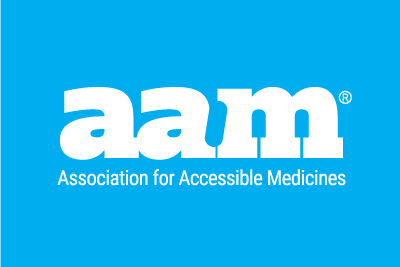Inter Partes Review (IPR) is a process that allows patent experts to take a second look at patents and ensure that every granted patent represents true innovation. This graphic demonstrates how IPR improves patent quality, accelerates competition and makes lower-cost generics and biosimilars accessible to U.S. patients.
Market circumstances make this measure necessary. Brand-name pharmaceutical companies have been known to create extensive patent portfolios that block competition and prevent more affordable medicines from reaching the market. IPR improves patent quality by allowing generic pharmaceutical companies to challenge erroneous patents and expedite the introduction of generic and biosimilar medications that would bring prices down through competition.
Under the IPR authority, the U.S. Patent and Trademark Office (PTO), a panel of judges with subject matter expertise, review the patent in 18 months with limited extensions. This represents a significant contrast to slower and costlier litigation in district court, which can take upwards of 30 months.
IPR works. Consistent with the Hatch-Waxman Act, it expedites the pathway for generic and biosimilar medicines to come to market. And it rewards true innovation.
Consider, for example, the prostate cancer medicine Zytiga (abiraterone acetate), for which generics were able to come to market in 2019 thanks to IPR. The nine generic competitors that have been able to enter the market currently offer an average 81% discount off of the brand-name product. Savings of this magnitude means that more cancer patients will have access to treatment.
Well-documented patent abuse is preventing other safe, affordable, FDA-approved generic and biosimilar medications from reaching patients. IPR is the remedy.
As the graphic makes clear, a patent examiner spends, on average, only 19 hours reviewing a patent application. Researchers from the Organisation for Economic Co-Operation and Development (OECD) have found that this time is insufficient to review prior art and issue Office Actions, which ultimately leads to the grant of otherwise invalid patents. IPR offers a necessary and efficient second look at these patents.
In spite of (or because of) its efficiency, IPR is currently being threatened with the paradoxically named STRONGER Patents Act, which would limit the ability of third parties—such as generic and biosimilars manufacturers—to challenge patents in PTAB proceedings.
Alex Moss, an attorney with the Electronic Frontier Foundation, has written, “Given that inter partes review has made it possible to cancel wrongly issued patents without spending millions of dollars, it’s no surprise patent owners are trying so hard to convince Congress to destroy it. Owners who exploit weak patents were much better off before IPR existed.”
Some brand-name manufacturers argue that while IPR might make sense for other technologies, it has no place in the pharmaceutical industry. But analysis focused on the procedure’s impact on drug patents found:
The IPR system appears to be mostly used to trim back the scope of follow-on patents that attempt to extend the original drug monopoly in order to make sure generics can enter once that original patent expires. This would appear to be completely consistent with the goals of Hatch-Waxman—ensuring that the original innovation is protected, but allowing for generics to efficiently provide that innovation after the original period of protection ends.
Rather than dilute IPR, it should be strengthened and improved to further lower prescription drug prices.
- Learn more about Intellectual Property (IP) and Patent Reform
By Karin Hessler, AAM Assistant General Counsel, and Megan Andersen, AAM Legal Fellow





